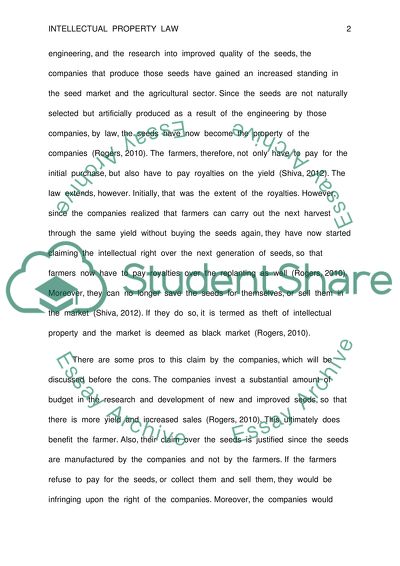Intellectual Property Law: the Intellectual Property of Seeds Essay. Retrieved from https://studentshare.org/law/1452353-intellectual-property-law
Intellectual Property Law: The Intellectual Property of Seeds Essay. https://studentshare.org/law/1452353-intellectual-property-law.


